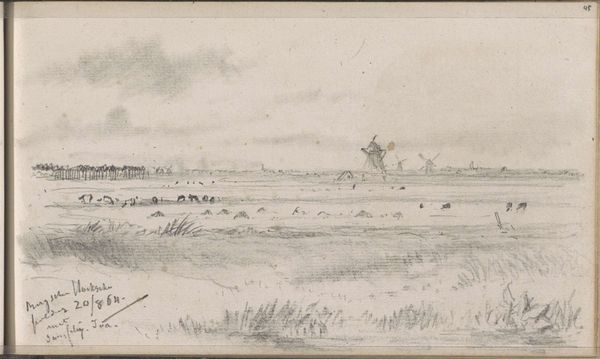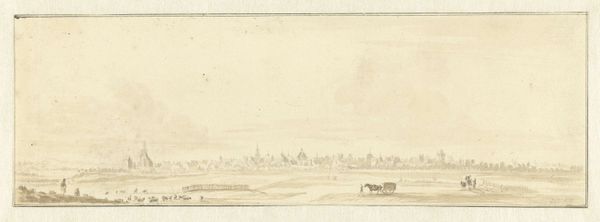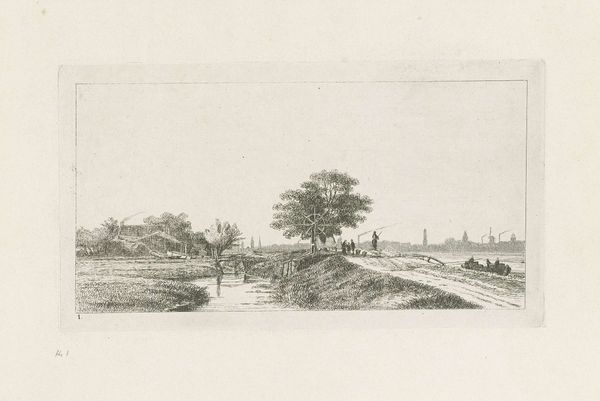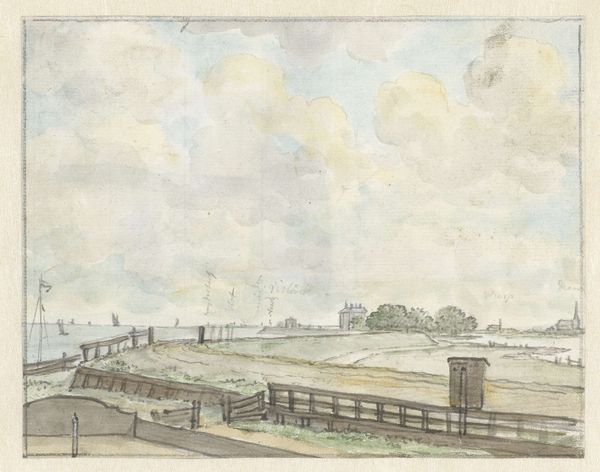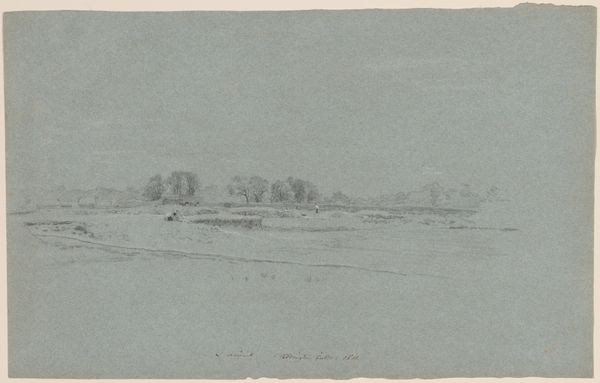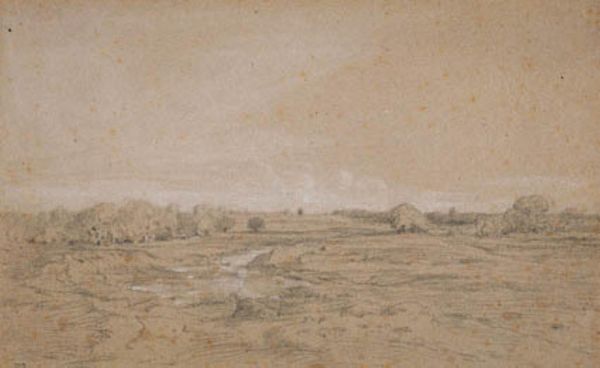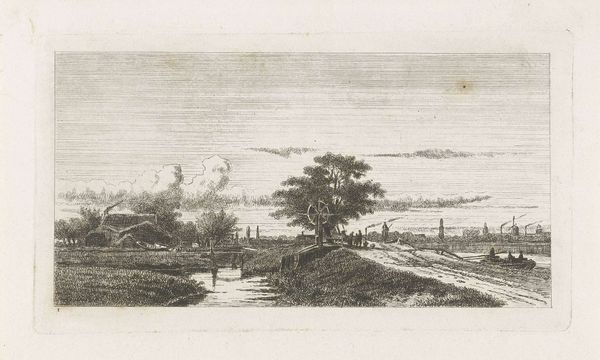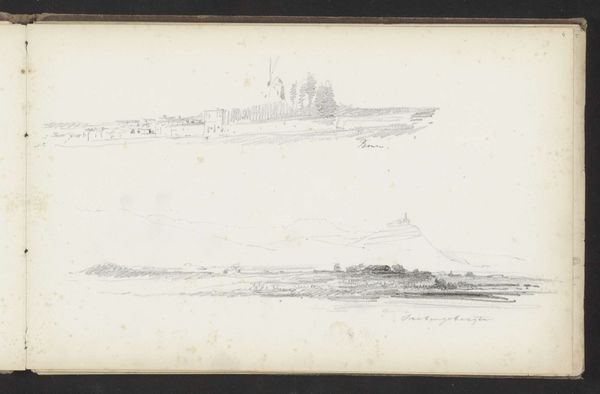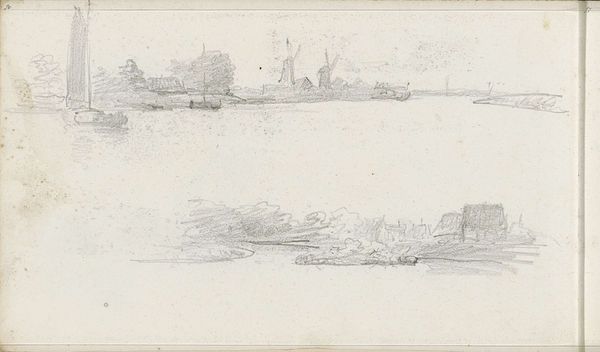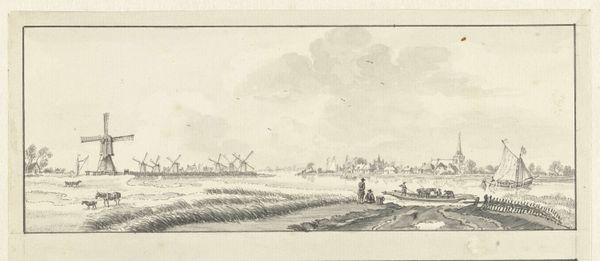
drawing, pencil
#
drawing
#
dutch-golden-age
#
pencil sketch
#
landscape
#
pencil
#
watercolor
#
realism
Dimensions: height 156 mm, width 475 mm
Copyright: Rijks Museum: Open Domain
Editor: This is Roelant Roghman's "View of Asperen," created around 1646-1647. It's a pencil and watercolor drawing. I’m struck by how sparse it is; the land seems to stretch forever. What catches your eye? Curator: I see a fascinating meditation on the materials available to Roghman and how those shaped not only the image but also its reception. Consider the accessibility of paper and pencil versus the oil paints used in more traditional high art landscapes. Doesn't this choice of humbler material democratize landscape depiction in some ways, bringing it to a wider audience through cheaper reproduction perhaps? Editor: That's a great point! So, you’re saying the medium itself plays a role in how people perceive and value the artwork? Curator: Precisely! Think about the labor involved: quickly sketching a landscape versus the painstaking process of oil painting. This changes not only production cost but also implies a different type of artistic intent, one emphasizing observation and documentation. And look at that stark horizon line! Roghman reduces the scene to near abstraction. Editor: So, the 'ordinary' materials highlight the process of seeing and recording a place, rather than idealizing it? Curator: Exactly. Dutch Golden Age landscapes are often understood through the lens of national pride and land reclamation. Here, though, Roghman foregrounds the very act of *making* a landscape, subtly shifting our focus to the materiality of artistic creation itself. It raises the question, what impact did mass production of paper and pencils have on the Dutch art market at this time? Editor: I never considered the material aspects so deeply. I was too focused on the imagery itself. Thank you, that gives me a lot to think about! Curator: It's exciting to reconsider the socioeconomic background, the ways even a seemingly simple sketch reveals complex interplays of labor, materials, and cultural value.
Comments
No comments
Be the first to comment and join the conversation on the ultimate creative platform.

